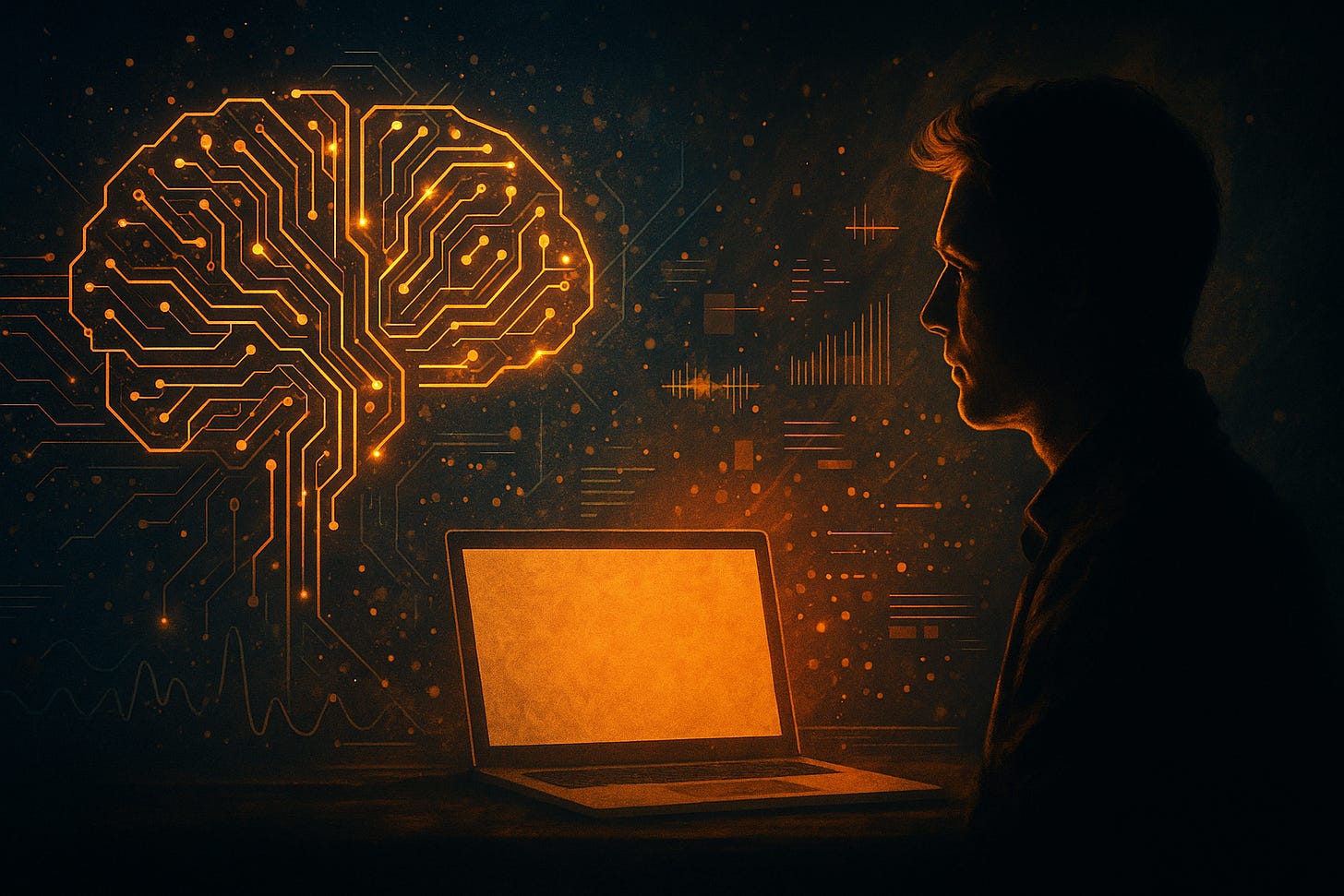The Future Is Co-Created: AI, Substack, and the New Creative Frontier
What happens when creativity meets computation—not to compete, but to collaborate?
We’re living through one of the most misunderstood revolutions in publishing. As artificial intelligence weaves itself into the fabric of creative work, a quiet transformation is unfolding beneath the surface of our blogs, newsletters, and digital journals.
This month, Substack released its AI Report, shedding light on how creators are using AI across the platform. It’s an insightful document—part progress check, part pulse reading—and it reveals something fascinating: we’re at the early stages of a new creative paradigm. One that’s not about replacement, but augmentation. Not about copying, but co-creating.
Let’s take a look.
The Numbers Behind the Shift
Substack’s report offered a snapshot of AI adoption across its creator base:
45.4% of creators are using AI in some way.
Image generation leads the creative use-cases at 41%, ahead of writing assistance.
Older men in Tech, Business, and Finance are the primary adopters.
The most common uses? Research, productivity, and proofreading.
Tools like ChatGPT, Claude, Grammarly, and Perplexity dominate usage.
Full-post generation is rare—most creators still prefer a human-first voice.
There’s growing interest in analytics, audience insights, and time-saving tools.
Substack offers native AI tools (like transcription and image generation), but they’re opt-in and relatively low-key.
In essence, AI is here, but quietly so.
What struck me most wasn’t the number of users, but how they use it. AI is not replacing the act of writing—it’s extending it. It’s the research assistant, the first-draft whisperer, the visual moodboard creator. In that sense, the future of content isn’t artificial. It’s collaborative.
Human + Machine: A New Creative Syntax
We’re entering a new phase of content creation, where intelligence is no longer confined to the skull. The page is no longer a blank space—it’s a conversation with the machine. AI isn’t just a productivity hack; it’s becoming a partner in ideation.
I call this CI: Collective Intelligence.
Not the artificial kind. The augmented kind. Intelligence that arises through the fusion of human insight and machine precision. Through intuition, meeting pattern recognition. Through the human story, meeting computational structure.
This shift changes everything—not just how we write, but how we think, teach, design, edit, and dream.
In the near future, I believe we’ll see:
Co-scripted podcasts, where an AI helps generate questions based on the latest headlines and listener patterns.
AI-edited video essays, designed with dynamic timing, subtitles, and scene transitions.
Blog templates that evolve with your tone, audience feedback, and trending topics.
Reader-aware posts, where machine learning tracks what resonates and helps shape future stories.
Multimodal creation, where writing, sound, and visuals emerge from a single creative interface shared between human and AI.
The tools are already here. What’s missing is the cultural permission—and platform architecture—to fully embrace it.
The Platform Dilemma
While the Substack AI Report paints an optimistic picture, it also hints at a deeper tension. AI creators often occupy a quieter lane—less visible in feeds, less likely to go viral. Some of that is generational. Some of it is cultural. Some of it is algorithmic.
If you write about AI, emerging tech, or post-mainstream futures, you’ve probably felt it: a sense that your work lives in the margins, even as the world moves rapidly in your direction.
This isn’t a critique—it’s a signal. Ecosystems matter. Discovery matters. Platforms shape perception.
If you're building with AI, where you share your work is as important as what you create.
That’s why I’m building a hybrid platform model: Substack for its community and reach, and Ghost as my sovereign creative base. It’s a shift that mirrors the deeper lesson of AI: decentralisation, augmentation, and conscious partnership.
More on this soon—watch this space.
Living the Future Means Co-Creating It
Here’s the most important truth in all of this: AI is not the future. We are.
AI is a mirror. A catalyst. A companion. But we are the stewards of meaning, curiosity, and vision. The future of publishing, art, and storytelling will belong to those who understand that the machine is not the endpoint—it’s the amplifier of intent.
I’m not interested in a world where AI replaces creators.
I’m interested in a world where creators evolve—where we reclaim time, expand scope, and sharpen clarity.
That’s the future I write for. That’s the promise of Terra 2.0: not man versus machine, but Homo Techno—a new kind of human who creates with the machine, not in competition with it.
So if you’re reading this, and you’ve felt uncertain, unseen, or overwhelmed by the AI wave, know this:
We’re not losing control.
We’re learning a new form of it.
And we’re only just beginning.
What about you?
Are you experimenting with AI in your writing, design, or thinking? Do you feel your platform supports or suppresses this exploration? I’d love to hear how you’re navigating this new terrain.
👇 Let’s start the conversation below.
Follow my journey on Notes, LinkedIn and 𝕏 @frankdasilva for real-time insights and bold ideas, and explore my broader work at Frank Da Silva – Living the Future.
🔥 Summer Special – 25% Off for 12 Months!
Subscribe now and get full access to MyGeekSpace for a whole year at 25% off. The offer is valid all summer long for new subscribers. Let’s #LiveTheFuture together. If you’ve found value in this journey, please consider supporting MyGeekSpace as a paid subscriber.
This post was researched and partially written with the assistance of ChatGPT-4o, then carefully curated and edited by me, the author. It reflects a collaboration between human imagination and artificial intelligence — a glimpse into the future of creative expression.










In my experience I would say that every platform suppresses ... to varying degrees. But it is early days ... this will change I believe when the 'stigma' of Ai creating naturally diminishes ... rock and roll was once the 'devil's music' , but not so much anymore. The pattern of acceptance remains in all times of change ....